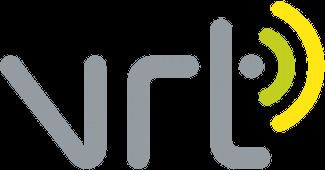Official website www.vrt.be Headquarters Brussels, Belgium Owner Flemish Community | CEO Paul Lembrechts (2016–) Founded 18 June 1930, Belgium Availability Belgium | |
 | ||
Country Flanders (includes Brussels) Launch date 1930 (radio)
1953 (television) Former names NIR (1930–1960),
BRT (1960–1991),
BRTN (1991–1998) Type of business Broadcast radio, television and online TV shows Thuis, Dagelijkse Kost, FC De Kampioenen, Blokken, Bumba Profiles | ||
Vlaamse radio en televisieomroeporganisatie
The Vlaamse Radio- en Televisieomroeporganisatie (Flemish Radio and Television Broadcasting Organization), or VRT, is the national public-service broadcaster for the Flemish Region and Community of Belgium.
Contents
- Vlaamse radio en televisieomroeporganisatie
- Television channels
- Current channels
- Former channels
- Radio channels
- Analog and digital
- Digital only channels
- References
It is the successor to the Nationaal Instituut voor de Radio-omroep (NIR; 1930–60), Belgische Radio- en Televisieomroep (BRT; 1960–1991), and Belgische Radio- en Televisieomroep Nederlandstalige Uitzendingen (BRTN; 1991–1998). The NIR (known as the INR in French) and BRT (RTB in French) had each been single state-owned entities with separate Dutch- and French-language production departments, but with the growing degree of federalism resulting from state reform in Belgium, BRT/RTB went their separate ways in 1977. The former French half changed its name to RTBF in 1977, while the Dutch side retained the BRT name until becoming BRTN in 1991. However, the two broadcasters share production facilities on Auguste Reyerslaan (French: Boulevard Auguste Reyers) in Brussels.
The final renaming to VRT, on 1 January 1998, followed a change in the organization's legal status: from being part of a semi-governmental entity (a parastatale in Belgian terminology) it had, on 16 April 1997, became a publicly owned corporation (NV van publiek recht) in its own right.
As successors to the NIR/INR, VRT and its counterpart in the French Community of Belgium, RTBF, are both members of the European Broadcasting Union (EBU) – an association of public broadcasters in the countries of Europe and the Mediterranean rim that, amongst other activities, organizes the annual Eurovision Song Contest.
With the ending of its television monopoly – marked by the creation of VTM, a commercial television company that initially captured more than half of VRT's audience – the public broadcaster has been compelled to fight back, and part of its successful response has been the use of external production houses such as Woestijnvis, the creator of such formats as The Mole (De mol) and Man bijt hond.
Television channels
Television channels are transmitted on:
Current channels
Former channels
Radio channels
The VRT broadcasts radio channels in both analog format (FM and AM) and digital format (using DAB and DVB-T). All channels are also broadcast live over the Internet.
International broadcasting was done via VRT's Radio Vlaanderen Internationaal (RVi).
Analog and digital
Digital-only channels
They also have a TMC service transmitted on Radio 2.
